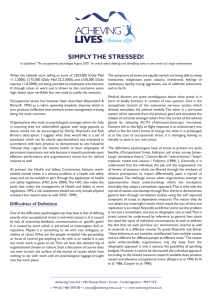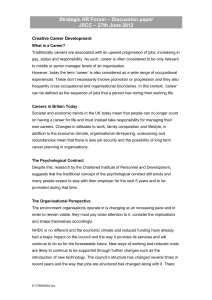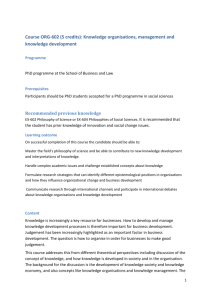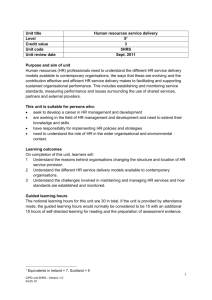EEA 9- Occupational levels
advertisement
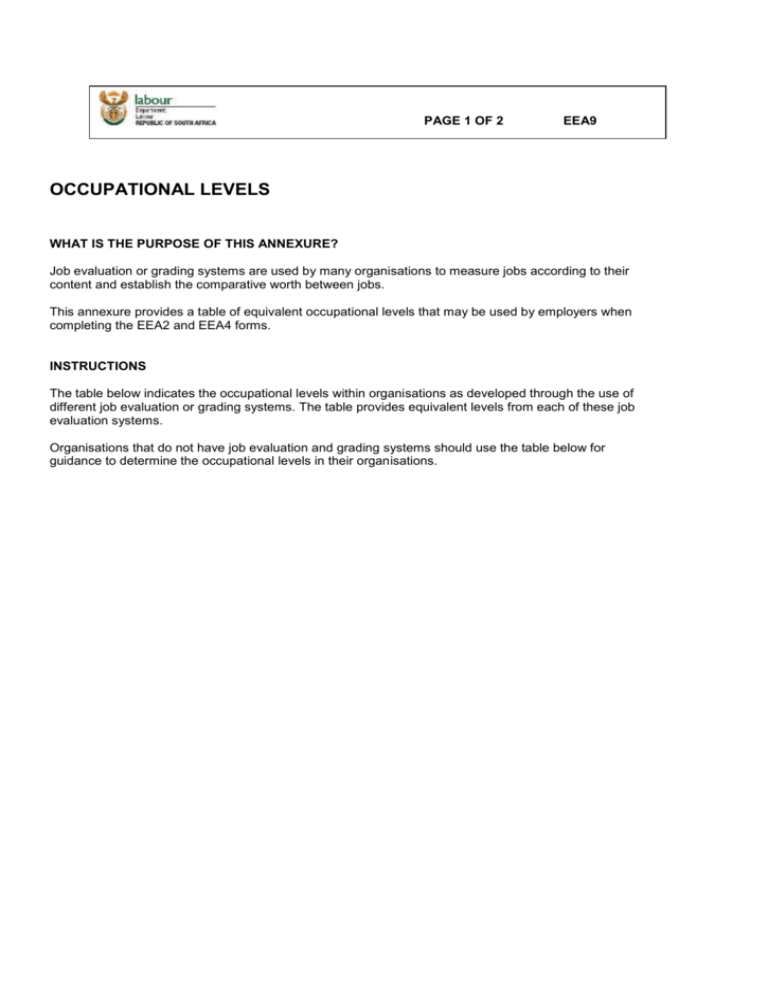
PAGE 1 OF 2 EEA9 OCCUPATIONAL LEVELS WHAT IS THE PURPOSE OF THIS ANNEXURE? Job evaluation or grading systems are used by many organisations to measure jobs according to their content and establish the comparative worth between jobs. This annexure provides a table of equivalent occupational levels that may be used by employers when completing the EEA2 and EEA4 forms. INSTRUCTIONS The table below indicates the occupational levels within organisations as developed through the use of different job evaluation or grading systems. The table provides equivalent levels from each of these job evaluation systems. Organisations that do not have job evaluation and grading systems should use the table below for guidance to determine the occupational levels in their organisations. OCCUPATIONAL LEVELS Top Management/ Executives Senior Management Professionally Qualified & experienced specialists/midmanagement Skilled Technical & Academically Qualified/ Junior Management/ Supervisors/ Foremen/ Superintendents Paterson Classic (levels) Paterson Modern (bands) ReMeasure ©(points) Hay Units ©(points) F+1 – F+5 G Band1 300-349 3581-7160 F1 – F5 F Lower-F Upper 250-299 1801-3580 E1-E5 D1-D5 C1-C5 E Lower-E Upper D Lower-D Upper C Lower-C Upper 200-249 150-199 100-149 735-1800 371-734 192-370 Hay Decision Tree (© points) Peromnes ©(points) Task © (levels) JEasy © (levels) 1++ 225-275 175-224 125-174 75-124 1 to 1+ 4-2 7-4 11-7 23-26 18-22 14-18 9-13 6a-6e 5a-5e 4a-4e 3a-3e Semi-Skilled & discretionary decisionmaking B1-B5 B Lower-B Upper 50-99 85-191 25-74 15-11 4-8 2a-2e Unskilled & defined decision-making A1-A3 A 20-49 54-84 0-24 19-16 1-3 1a-1c 1 The F+1 – F+5 levels are commonly referred to as the G Band in industry and extend beyond the Paterson Classic F5 band. 2 of 2 EEA9 3 of 4 EEA3 DESCRIPTION Controls the functional integration of the business. Determines the overall strategy and objectives of the business. Directs the company into the future. The nature of the work and focus is long-term. Signoff on policy or strategy Knowledge of entire business area/BU/company or group. Provide inputs for/formulation of the overall Organisational strategy. Translates the overall strategy into business plans for BU/Functional Unit, thereby operationalising organisational strategy. Implements and manages business plan, goals and objectives and ensures the achievement of overall key Organisational/BU/Functional outputs. Manages the development of innovation and change Professional knowledge of sub-discipline or discipline. Provide input in the formulation of Organisational/Functional Unit business plans. Formulate and implement departmental/team plans that will support the BU business plans. Optimisation of resources (finances, people, material, information and technology) to achieve given objectives in most productive and cost effective way. Applies broad knowledge of products, techniques and processes. Evaluates procedures and applies previous experience. A good solution can usually be found. Determines own priorities. What has to be done is stipulated; but may require initiative in terms of how it should be done Accountable for direct product, process or service quality. Incremental improvement of existing processes and procedures according to clear guidelines. Choosing of correct action on the basis of set standards, training procedures and past experience Steps to accomplish work or processes are clearly defined and understood. Tasks are sometimes repetitive and uncomplicated and the work cycle is short


